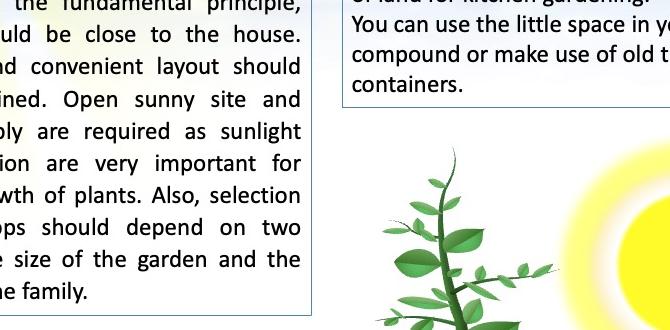If you are a plant enthusiast, you must know how important it is to have a greenhouse potting bench. It not only provides the perfect place to work on your plants but also helps in organizing your tools and supplies.
We will discuss the benefits of having a potting bench in your greenhouse, the basic tools and materials needed to build one, and five easy ways to build your potting bench or table.
Whether you prefer a DIY wooden bench or an upcycled pallet table, we have you covered. We will also provide tips on maintaining and caring for your potting bench so that it lasts for years to come. So, let’s start creating the perfect workspace for all your gardening needs.
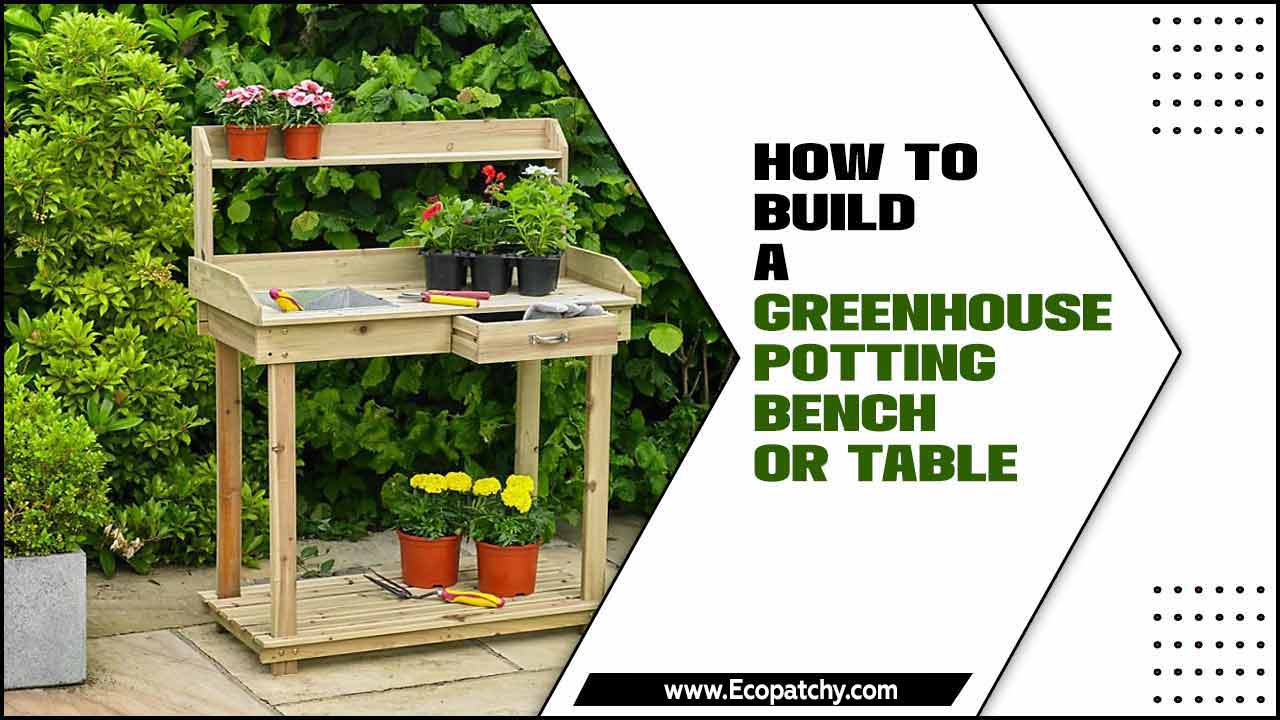
Importance Of Greenhouse Potting Benches
Organizing your gardening tools and supplies efficiently is essential for a productive greenhouse. With a greenhouse potting bench, you can create a dedicated space for potting, transplanting, and mixing soil. This allows you to work more comfortably and reduces strain on your back and knees.
The lower shelf provides plenty of room for storing bags of soil or pots, while the top shelf offers additional space for tools or seed trays. A greenhouse potting bench also ensures easy access to everything you need, increasing productivity in your garden. Furthermore, it protects your greenhouse floor from excess dirt and water, keeping your workspace clean and tidy. Build your potting bench and enjoy its benefits to your garden space.
Benefits Of Having A Greenhouse Potting Bench
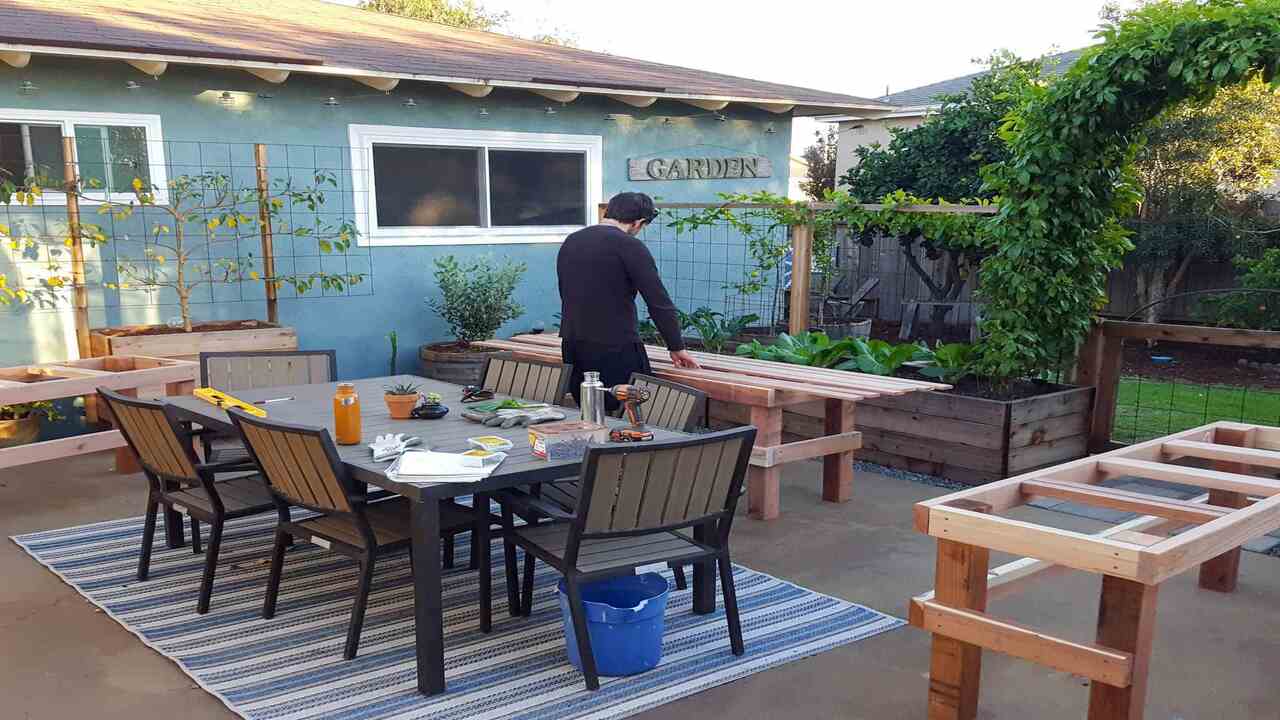
A greenhouse potting bench can benefit avid gardeners and plant enthusiasts. With these benefits in mind, building a greenhouse potting bench can be a worthwhile investment for any passionate gardener looking to enhance their gardening experience. Here are some reasons why you should consider building a greenhouse potting bench:
- Increased Organization: A dedicated workspace like a potting bench can help keep your tools, pots, and supplies neatly organized, making it easier to find what you need when working in your greenhouse.
- Efficient Workflow: With a potting bench, you’ll have a designated area for transplanting seedlings, repotting plants, and starting new cuttings. This can streamline your gardening process and make tasks more efficient.
- Reduced Strain On Your Back: By having a potting bench at a comfortable height, you can avoid the discomfort of constantly bending over or kneeling on the ground while working with plants. This can help prevent backaches and other physical strain.
- Protects Your Plants: A potting bench inside your greenhouse provides a clean and controlled environment for working with delicate seedlings or sensitive plants. It minimizes the risk of introducing pests or diseases from outdoor surfaces.
- Additional Storage Space: Many potting benches have built-in shelves or drawers, providing extra storage for gardening tools, fertilizers, pots, and other essentials. This helps keep everything within reach while keeping your workspace clutter-free.
Basic Tools And Materials Needed
Building a greenhouse potting bench or table can be a fun and rewarding DIY project. To get started, you will need a few basic tools and materials. Here is a list of what you will need:
- Tape measure
- Saw (circular saw or miter saw)
- Drill
- Screwdriver
- Level
- Pencil or marker
- Safety goggles
- Work gloves
In Terms Of Materials, You Will Need:
- 2×4 lumber for the frame and legs
- Plywood for the tabletop and shelves
- Wood screws
- Wood glue (optional)
- Sandpaper
Having these tools and materials on hand will ensure that you have everything you need to build your own greenhouse potting bench or table successfully.
How To Build A Greenhouse Potting Bench Or Table: 5 Easy Ways
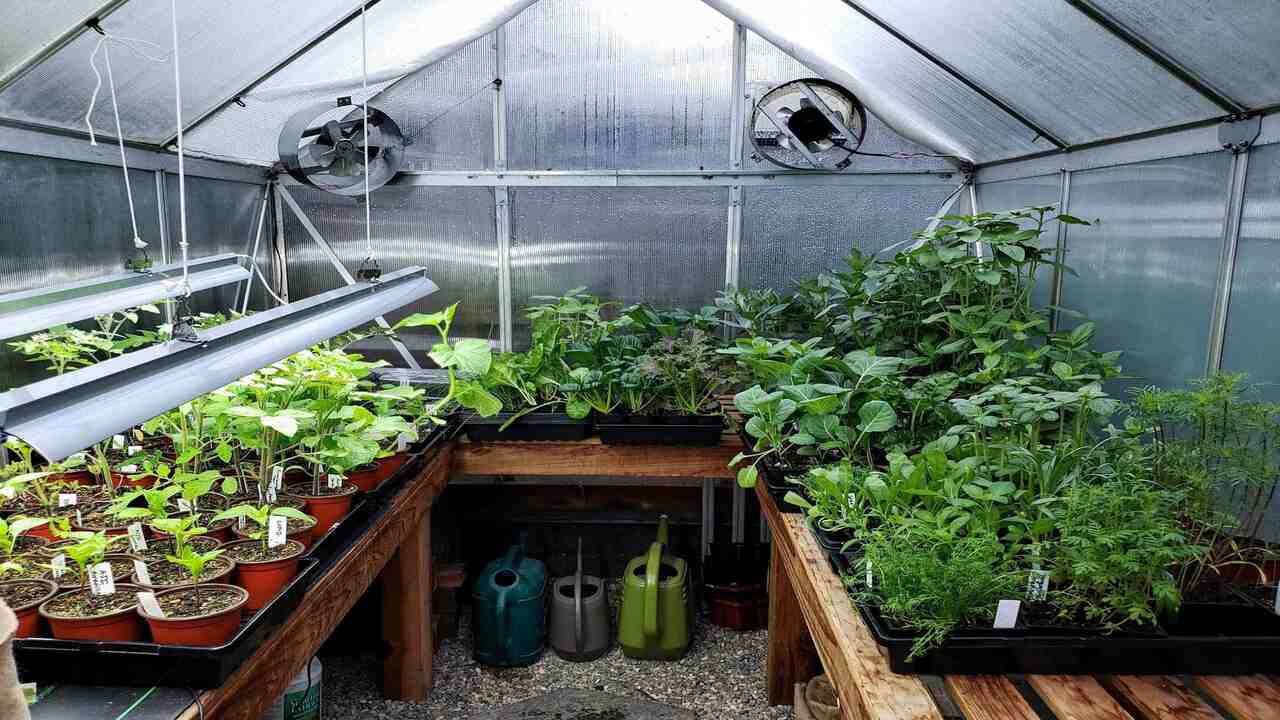
Building a greenhouse potting bench or table is a practical and efficient way to enhance your gardening experience. Not only does it provide a dedicated space for potting and arranging plants, but it also promotes sustainability and environmental consciousness.
There are several easy ways to construct a green and eco-friendly potting bench that seamlessly blends functionality with aesthetics. Here, we are discussing 5 ways how to build a greenhouse potting bench or table.
1.Diy Wooden Potting Bench
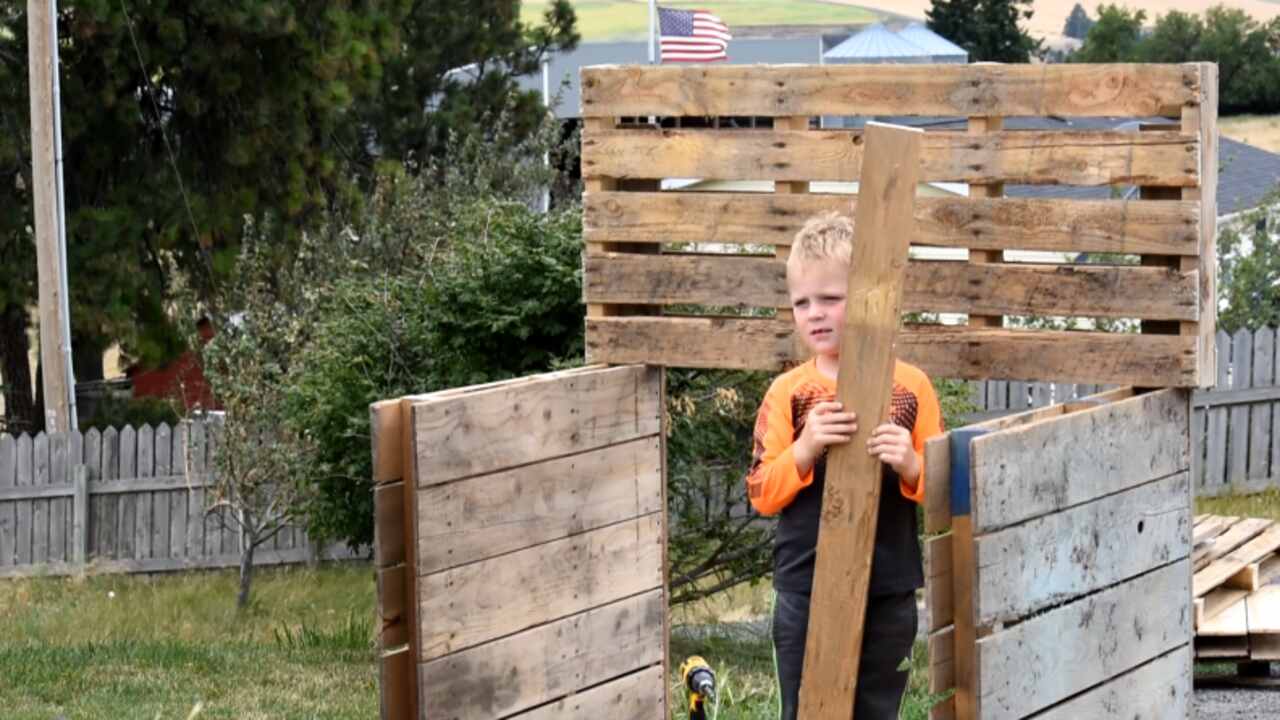
Building your own DIY wooden potting bench is a great way to save money and customize your gardening workspace. Here are the steps to help you build a greenhouse potting bench:
- Gather Materials: You will need wooden boards, screws, a saw, drill, measuring tape, and sandpaper.
- Measure And Cut The Wood: Measure and mark the dimensions for your potting bench. Cut the wooden boards according to these measurements.
- Assemble The Frame: Start by building the frame of the potting bench using the longer boards as the legs and the shorter boards as the horizontal supports. Secure them together using screws.
- Add Shelves And Tabletop: Attach additional boards across the frame to create shelves and a tabletop. Make sure they are level before securing them in place with screws.
- Sand And Finish: Smooth out any rough edges or surfaces with sandpaper. Apply a weather-resistant finish or paint to protect the wood from moisture and prolong its lifespan.
- Optional Extras: Consider adding hooks or storage compartments for gardening tools, as well as a backboard to hang small pots or tools.
Building your greenhouse potting bench can be a rewarding project that enhances your gardening experience while minimizing costs. Happy building!
2.Repurposed Furniture Potting Bench
Building a repurposed furniture potting bench is a great way to add functionality and character to your greenhouse. Not only does it provide a convenient workspace for all your gardening needs, but it also allows you to repurpose old furniture and reduce waste. Here are some steps to help you build your own repurposed furniture potting bench:
- Find The Right Furniture Piece. Look for a sturdy and durable piece of furniture that can be transformed into a potting bench. This could be an old table, desk, or even a dresser.
- Prepare The Furniture. Clean and sand the furniture piece to remove any dirt or imperfections. If needed, make any necessary repairs or modifications.
- Add Shelves And Storage. Depending on the design of the furniture piece, you may want to add shelves or storage compartments to hold pots, tools, and other gardening supplies. This can be done by attaching additional boards or crates.
- Create A Work Surface. Install a durable work surface on top of the furniture piece. This can be made from plywood or another suitable material.
- Finish And Paint. Apply a protective finish to the wood and paint the potting bench in a color of your choice. This will not only enhance its appearance but also protect it from moisture and wear.
Once your repurposed furniture potting bench is complete, you’ll have a functional and attractive workspace for all your greenhouse gardening activities.
3.Pvc Pipe Potting Table
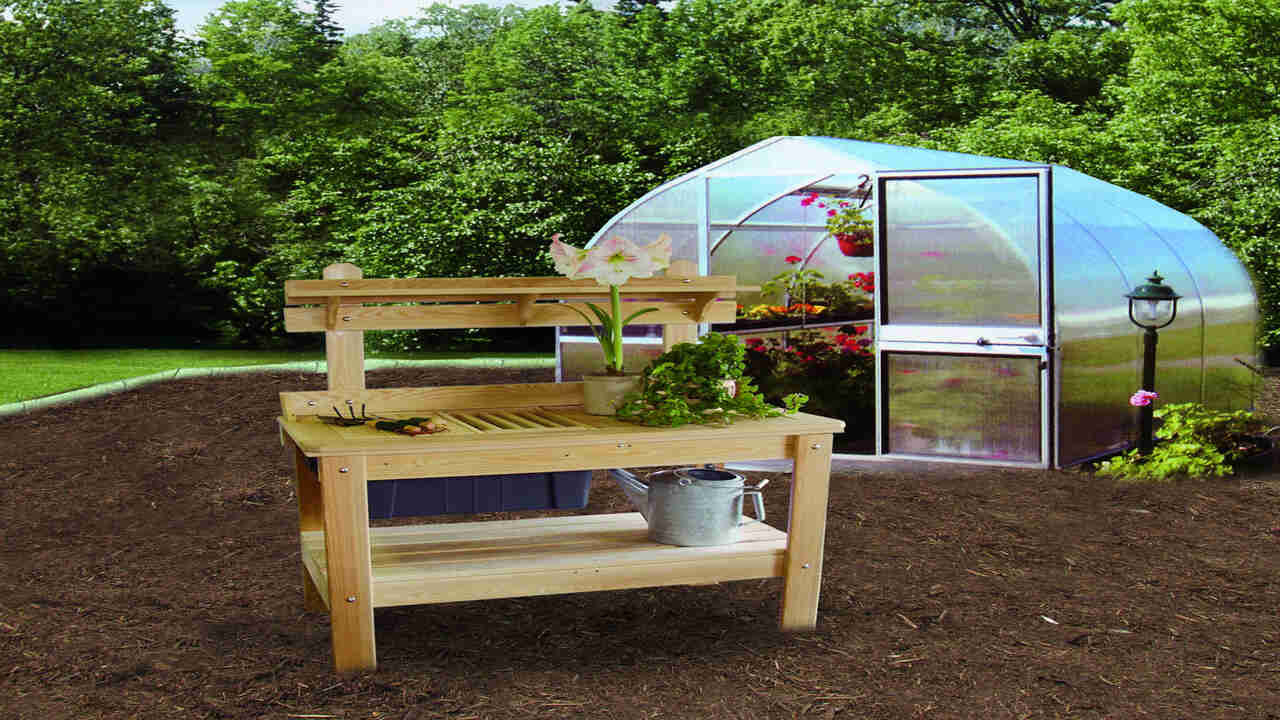
Building a PVC pipe potting table can be a great addition to your greenhouse. Not only is it a cost-effective and durable option, but it is also relatively easy to build. Here’s a step-by-step guide on how to build a PVC pipe potting table:
- Gather Materials: You will need PVC pipes, connectors, and fittings, as well as a sheet of plywood or other suitable material for the tabletop.
- Measure And Cut The PVC Pipes: Determine the desired dimensions for your potting table and cut the PVC pipes accordingly using a saw or pipe cutter.
- Assemble The Frame: Connect the PVC pipes using the connectors and fittings to create the frame of the potting table. Make sure all joints are secure.
- Attach The Tabletop: Place the sheet of plywood or other material on top of the frame and secure it with screws or adhesive.
- Optional: Add additional features, such as shelves or hooks for storage and organization.
- Test Stability: Ensure the potting table is stable and level by adjusting any uneven legs or adding stabilizing elements if needed.
- Prepare For Use: Clean and sanitize your new potting table before using it to ensure a clean and safe working environment for your plants.
By following these steps, you can easily build a PVC pipe potting table that will provide you with a sturdy and functional workspace in your greenhouse. Happy gardening!
4.Metal Or Wire Mesh Potting Bench
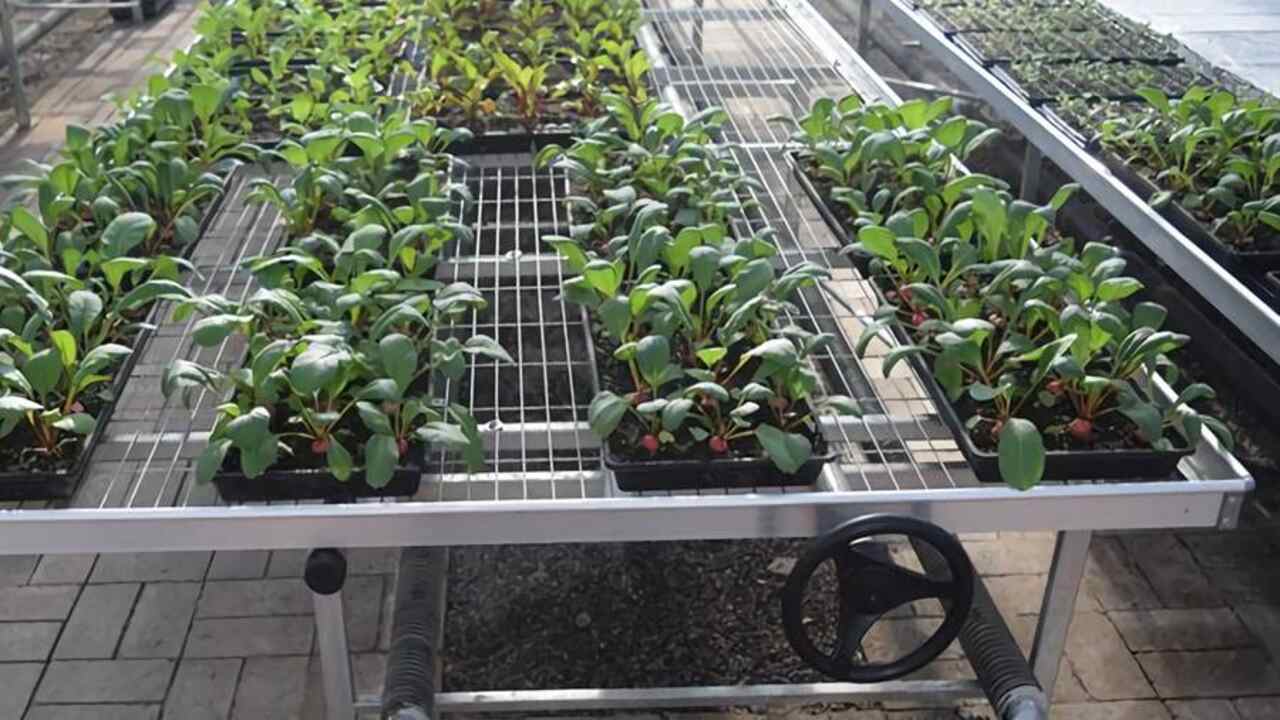
Building a metal or wire mesh potting bench for your greenhouse can provide a sturdy and functional workspace for all your gardening needs. Here are some steps to help you build your own:
- Gather Materials: You will need metal or wire mesh panels, metal brackets, screws, a drill, and a saw.
- Measure And Cut The Panels: Measure the desired dimensions for your potting bench and use a saw to cut the metal or wire mesh panels to size.
- Assemble The Frame: Use the metal brackets to connect the panels and create a sturdy frame for your potting bench.
- Attach The Tabletop: Cut a piece of plywood or another durable material to serve as the tabletop. Use screws to attach it securely to the frame.
- Add Storage Shelves: If desired, you can add additional shelves using more metal or wire mesh panels. Attach them to the frame with screws.
- Finish and customize: Sand any rough edges, paint or stain the bench if desired, and add any other customizations such as hooks or storage bins.
By following these steps, you can create a functional and durable potting bench that will enhance your greenhouse gardening experience.
5.Upcycled Pallet Potting Table
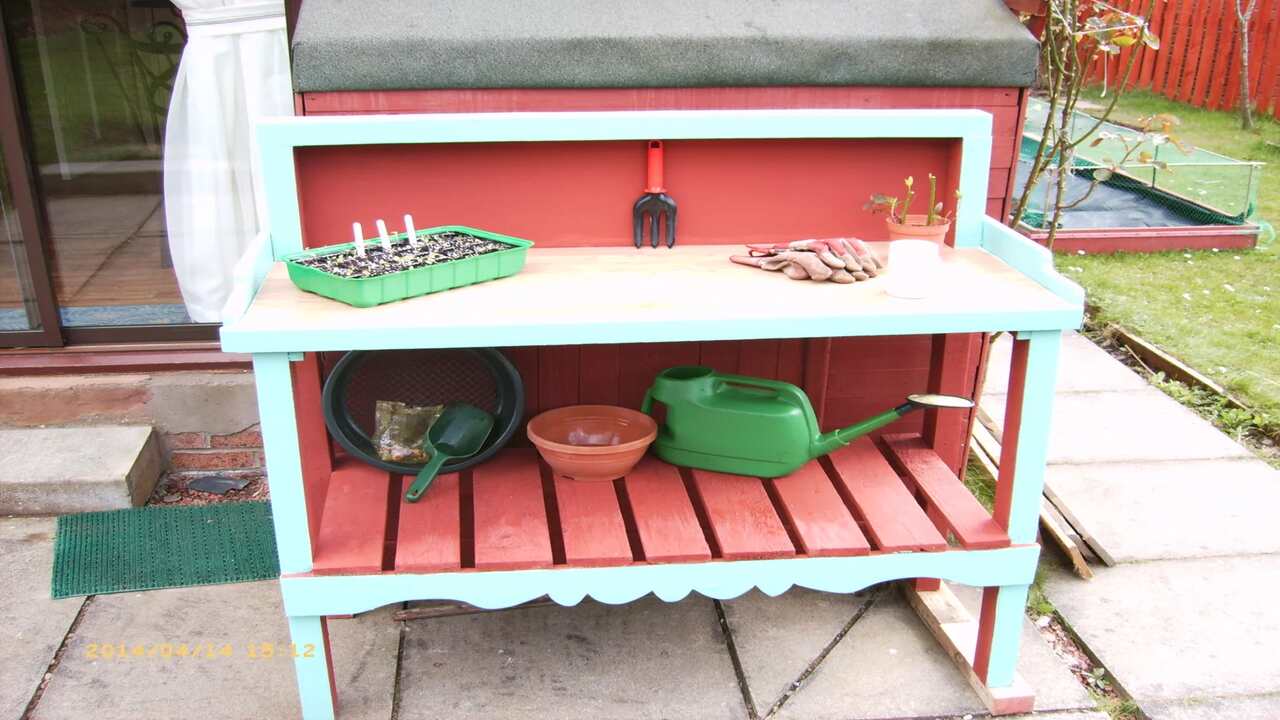
Building an upcycled pallet potting table is a great way to create a functional and eco-friendly addition to your greenhouse. Here are the steps to build your own:
- Gather The Materials: You will need a wooden pallet, screws, a screwdriver or drill, sandpaper, and paint or stain (optional).
- Prepare The Pallet: Start by sanding down any rough edges or splinters on the pallet. This will ensure a smooth surface for working.
- Attach Additional Boards: Depending on the size of your pallet, you may want to attach additional boards to create shelves or storage space. Use screws to secure these boards in place.
- Paint Or Stain (Optional): If desired, you can paint or stain the potting table to match your greenhouse decor. Be sure to use eco-friendly paints and stains.
- Place In Your Greenhouse: Once your potting table is complete and dry, move it into your greenhouse and use it for all your gardening needs.
Maintenance And Care Of Your Greenhouse Potting Bench
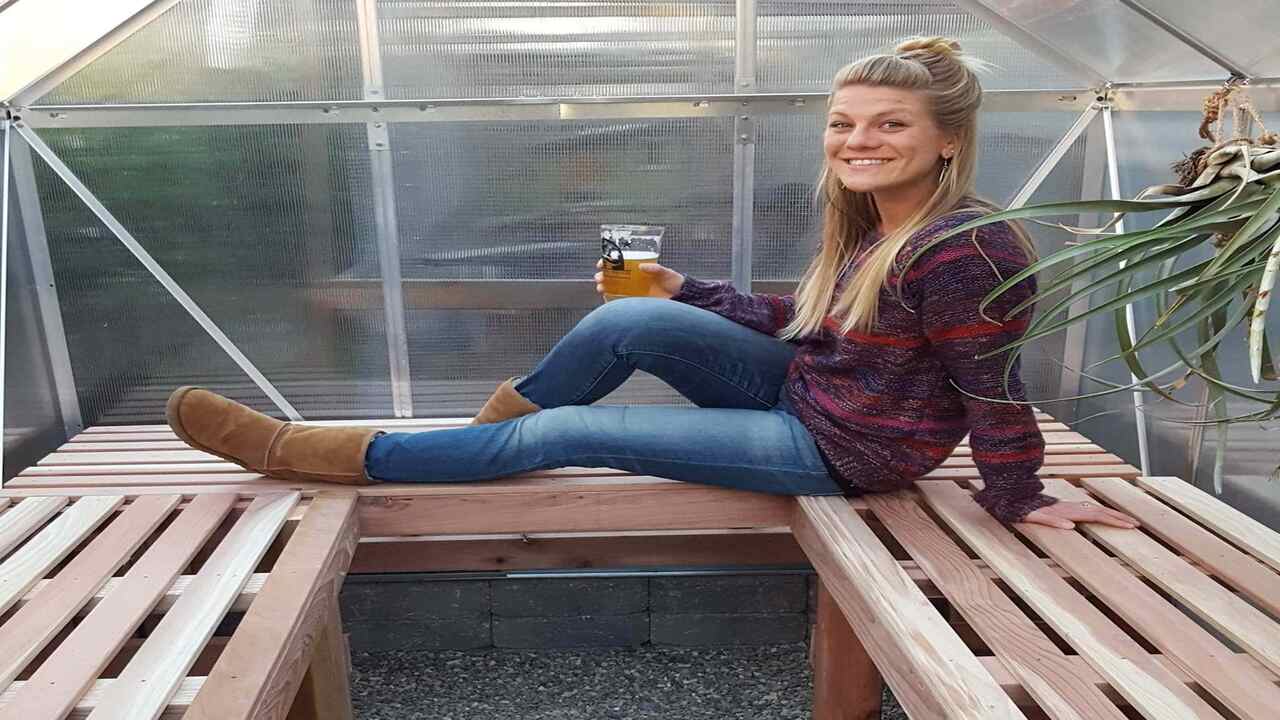
Proper maintenance and care of your greenhouse potting bench are essential for its longevity and functionality. Here are some tips to help you keep your potting bench in top shape:
- Regular Cleaning: Wipe down the bench’s surface with a damp cloth or sponge to remove dirt, debris, and any spilled soil or fertilizer. This will prevent buildup and keep your bench looking tidy.
- Waterproofing: If your potting bench is made of wood, consider applying a waterproof sealant to protect it from moisture damage. This will extend its lifespan and prevent warping or rotting.
- Storage Organization: Keep your tools and supplies organized on the potting bench by using hooks, shelves, or containers. This will not only make it easier to find what you need but also prevent clutter and ensure a safe working environment.
- Regular Inspections: Periodically check for any signs of wear or damage, such as loose screws or cracked surfaces. Repair or replace any damaged parts promptly to maintain the structural integrity of the bench.
- Seasonal Adjustments: Depending on the climate in your area, you may need to make seasonal adjustments to your potting bench. For example, during colder months, you may want to cover or move your bench indoors to protect it from harsh weather conditions.
By following these maintenance and care tips, you can ensure that your greenhouse potting bench remains a functional and durable workspace for all your gardening needs.
Conclusion
A greenhouse potting bench is a valuable addition to any gardening space. It provides a dedicated area for potting, organizing tools, and storing supplies. Having a potting bench in your greenhouse not only enhances efficiency but also keeps your workspace neat and tidy.
Whether you choose to build a DIY wooden bench, repurpose existing furniture, or opt for a PVC or metal design, the key is to create a sturdy and functional workspace that suits your needs.
Remember to maintain and care for your potting bench regularly, ensuring it remains clean and debris-free. With a well-maintained potting bench, you can enjoy seamless and enjoyable gardening experiences. We hope you understand how to build a Greenhouse potting bench or table.
Frequently Asked Questions
1.What Is The Best Material For A Greenhouse Bench?
Ans: When choosing a material for a greenhouse bench, popular options include cedar or redwood, known for their natural resistance to rot and insects. Pressure-treated lumber is also durable, but use it with caution due to potential chemical leaching. Metal or plastic benches may be lighter and more affordable, but they lack the durability and natural look of wood. Ultimately, the best material depends on your budget, aesthetic preferences, and intended use.
2.What Is The Best Height For A Greenhouse Bench?
Ans: The ideal height for a greenhouse bench is typically around 36 inches. This ensures comfortable working without straining or bending. When deciding on the final height, consider your own body’s height. Adjustable legs can be a great option to achieve the perfect working height.
3.What Are The Tables In A Greenhouse Called?
Ans: Tables in a greenhouse are commonly known as potting benches or potting tables. These provide a sturdy and organized surface for planting, potting, and preparing plants. They can be made from various materials like wood, metal, or plastic, and some even have built-in storage compartments for tools and supplies.
4.How Tall Should A Greenhouse Table Be?
Ans: When building a greenhouse table, it’s important to consider the height for comfortable use. A standard height of 32-36 inches is recommended, but you should also take into account your own height and preferences. Additionally, make sure the table is suitable for the height of your plants and pots.
5.What Is The Effect Of Organic Gardening?
Ans: Organic gardening has numerous positive effects. It helps reduce chemical pollution, preserves soil fertility through natural methods like composting and crop rotation, promotes biodiversity with beneficial insects and microbes, and offers health benefits by reducing pesticide residues in food.

